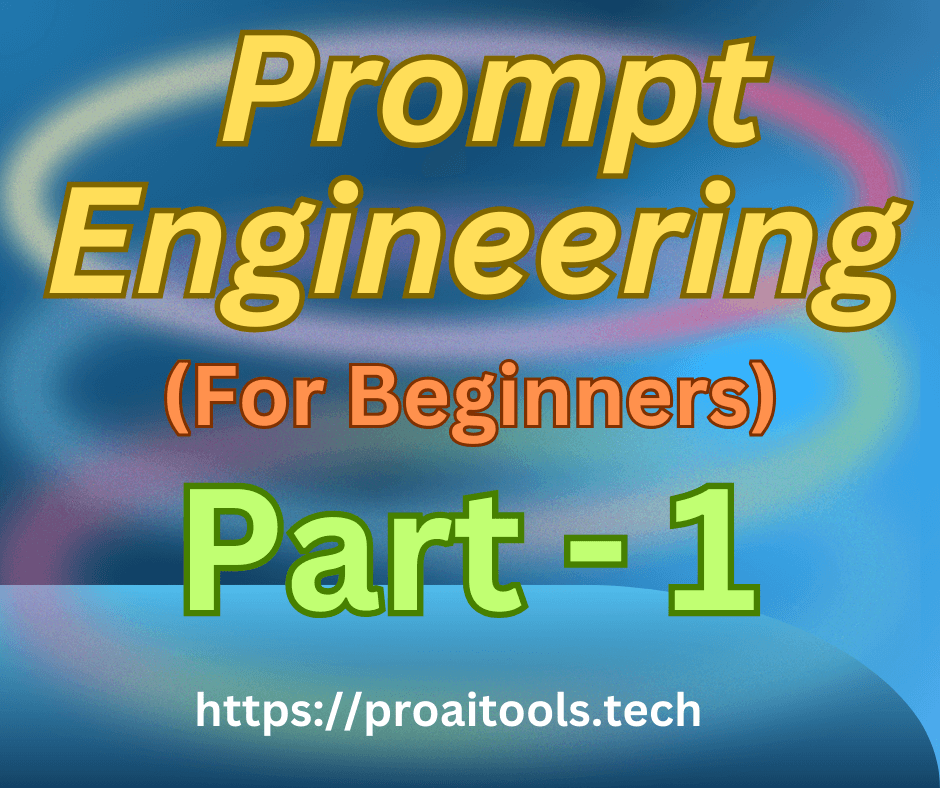A Beginner’s Step-by-Step Guide to Prompt Engineering
Introduction
What is Prompt Engineering?
Prompt engineering involves crafting effective instructions or inputs (prompts) for AI models to generate desired outputs. It’s an essential skill for maximizing AI’s capabilities.
Why is it Important?
- It improves the precision and relevance of AI outputs.
- Saves time by reducing back-and-forth iterations.
- Helps you unlock hidden functionalities of AI systems.
Understanding the AI Model
Before designing prompts, you need to understand:
- Model Capabilities: Is it trained for text, images, or something else? For example, ChatGPT excels at conversational and instructional tasks.
- Model Limitations: AI might misunderstand ambiguous or overly complex prompts.
- Token Limits: AI responses are constrained by token limits (e.g., 4,000 tokens for ChatGPT).
Basic Prompt Structuring
Step 1: Start with a Clear Objective
Define what you want from the AI. For instance, do you need a summary, a creative story, or an answer to a question?
Step 2: Be Specific
Avoid vague language. Instead of “Write something about AI,” say, “Write a 300-word introduction about the history of artificial intelligence.”
Step 3: Provide Context
More context improves accuracy.
Example:
- Ambiguous Prompt: “Explain neural networks.”
- Improved Prompt: “Explain neural networks in simple terms for a beginner audience.”
Step 4: Use Instructions
Clearly outline format and tone requirements.
Example: “Write a professional, 500-word blog post with an introduction, body, and conclusion.”
Advanced Prompt Techniques
Step 1: Use Few-Shot or Zero-Shot Learning
- Zero-Shot: No example is provided, e.g., “Generate a persuasive email for a marketing campaign.”
- Few-Shot: Provide examples to guide the AI.
Example:
“Here’s a sample description: ‘A fast-paced thriller about espionage.’ Now generate one for a romance novel.”
Step 2: Chain of Thought Prompting
Encourage the model to explain its reasoning step-by-step.
Example:
“Explain how photosynthesis works in plants step-by-step.”
Step 3: Role Assignment
Assign roles for context and tone.
Example: “You are a professional chef. Write a recipe for a healthy vegan breakfast.”
Step 4: Constraint-Based Prompts
Add constraints like word limits, tone, or style.
Example: “Write a 100-word product description for a smartwatch in a persuasive tone.”
Testing and Refining Prompts
Step 1: Test Iteratively
Run the prompt and evaluate the results. Does the output match your expectations?
Step 2: Refine Based on Feedback
If the output is incorrect, revise the prompt for clarity or add constraints.
Step 3: Use Error Analysis
- If the response is too verbose, specify a word limit.
- If the tone is off, redefine it explicitly.
Common Pitfalls and How to Avoid Them
1. Ambiguity
Avoid unclear or open-ended prompts.
- Poor: “Tell me about AI.”
- Improved: “Provide a detailed explanation of AI applications in healthcare.”
2. Overloading the Prompt
Don’t include too many instructions in one go. Break them into smaller steps if needed.
3. Ignoring Feedback
AI outputs often reveal weaknesses in your prompt. Use this feedback to refine your inputs.
Best Practices in Prompt Engineering
- Iterate Frequently: The first prompt is rarely perfect.
- Document Prompts: Keep a record of what works for reuse.
- Stay Updated: AI models evolve, and new capabilities may require updated prompt strategies.
- Experiment: Try unconventional prompts to discover unexpected model capabilities.
This guide offers a foundation. As you gain experience, you can explore advanced techniques and apply them creatively to various use cases. Let me know if you’d like an advanced guide or more examples!
We have created a course of prompt Engineering. This course is for beginners only . The course is divided in 8 parts in form of articles. You have read first part of this course. Following are the links of all other parts of the course :
Click here for Prompt Engineering (Beginners) Part- 2
Click here for Prompt Engineering (Beginners) Part- 3
Click here for Prompt Engineering (Beginners) Part- 4
Click here for Prompt Engineering (Beginners) Part- 5
Click here for Prompt Engineering (Beginners) Part- 6
Click here for Prompt Engineering (Beginners) Part- 7
Click here for Prompt Engineering (Beginners) Part- 8
Very soon we’ll introduce intermediate level and advanced level of prompt engineering .



Pingback: Improve ChatGPT Prompts For Automation Success: Practical Tips For Better Results In 2025 - Pro AI Tools